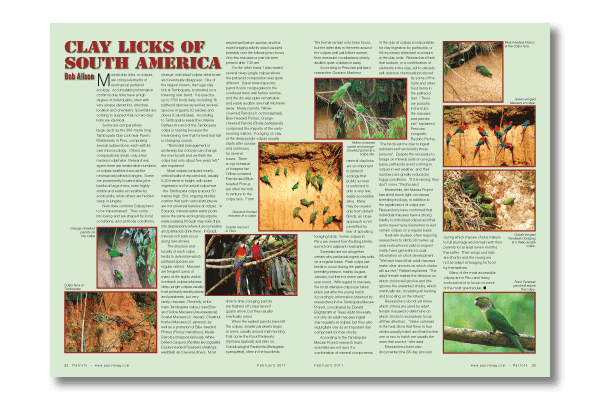Mineral clay licks, or colpas, are critical elements of neotropical psittacid ecology. Accumulating information confirms clay licks have a high degree of individuality, often with very unique dynamics, structure, location and chemistry. Scientists are coming to suspect that no two clay licks are identical.
Some are comparatively large, such as the 300-metre long Tambopata Clay Lick near Puerto Maldonado in Peru, comprising several subsections, each with its own microecology. Others are comparatively small, only a few metres in diameter. Researchers agree there are inestimable numbers of colpas scattered across the neotropical psittacid ranges. Some are prominently located along the banks of large rivers, main highly visible and easily accessible by ecotourists, while others are hidden deep in jungles.
Read more in the magazine…

